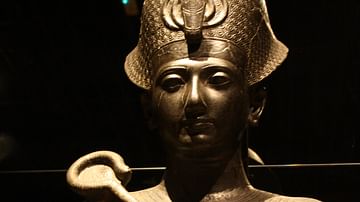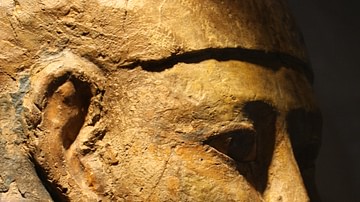Illustration
The inscriptions on the sides identify the man as Senemiah, a priest of the Theban moon-god Khons, with the unsual phrase "he whose hands are pure when adorning his god," referring to the daily ritual in which the image of the god was given fresh food and clothing. This is a fine example of a type of small statue placed in tombs at this period, inscribed in clearly incised hieroglyphs with the formula requesting a share in the offering made by the king to the gods. Probably from Thebes, Egypt. Early 18th Dynasty, circa 1500 BCE. (National Museum of Ireland-Archaeology, Dublin, Republic of Ireland)
About the Author
Cite This Work
APA Style
Amin, O. S. M. (2015, December 18). Statue of Egyptian Priest Senemiah. World History Encyclopedia. Retrieved from https://www.worldhistory.org/image/4301/statue-of-egyptian-priest-senemiah/
Chicago Style
Amin, Osama Shukir Muhammed. "Statue of Egyptian Priest Senemiah." World History Encyclopedia. Last modified December 18, 2015. https://www.worldhistory.org/image/4301/statue-of-egyptian-priest-senemiah/.
MLA Style
Amin, Osama Shukir Muhammed. "Statue of Egyptian Priest Senemiah." World History Encyclopedia. World History Encyclopedia, 18 Dec 2015, https://www.worldhistory.org/image/4301/statue-of-egyptian-priest-senemiah/. Web. 19 Apr 2025.








